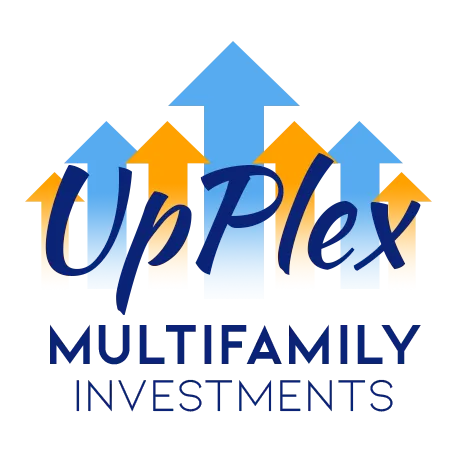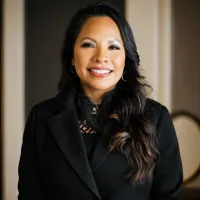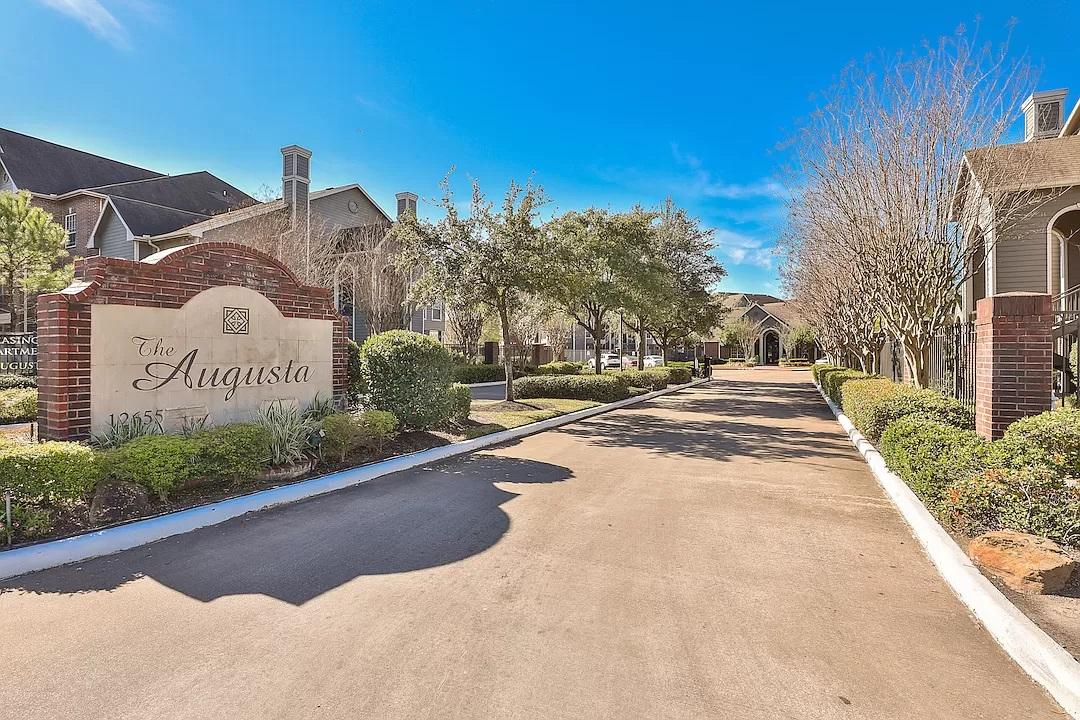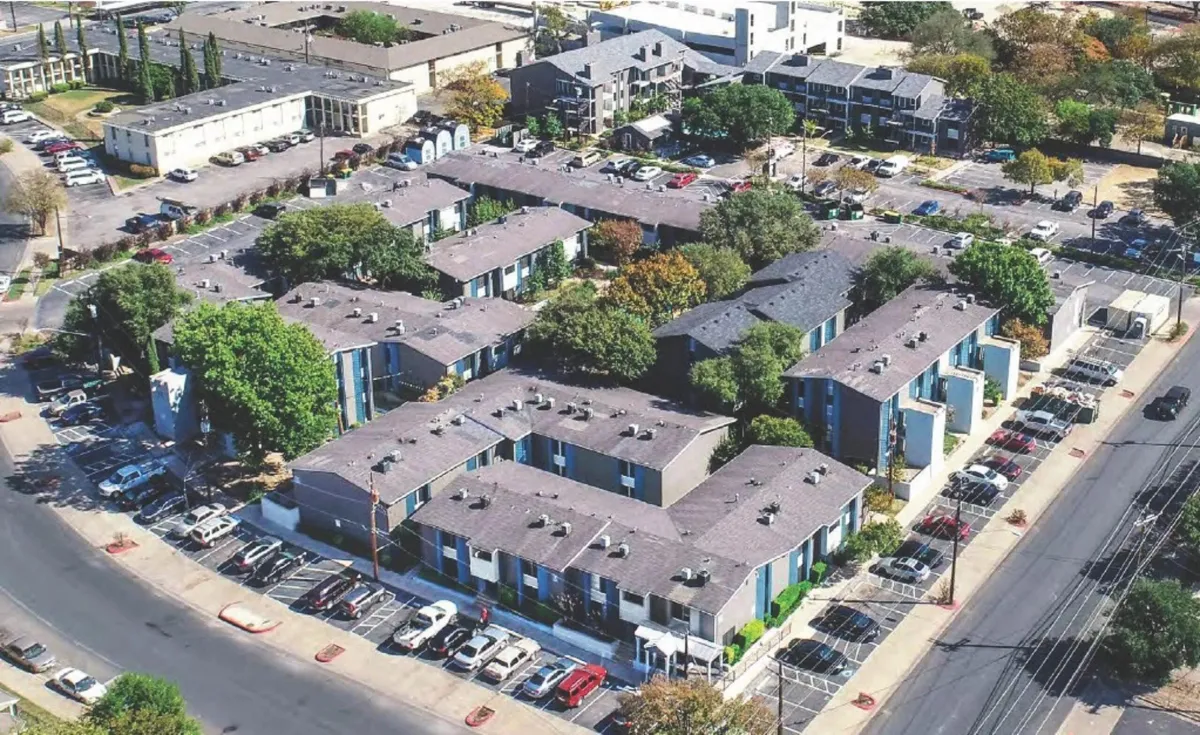
Experience
Seasoned asset managers with a passion for uplifting others through real estate investing opportunities.

Education
Build confidence in your ability to invest wisely with the free educational resources

Connection
Stay informed and up to date with the latest investment opportunities and company developments
About us
Christopher Linger and Maricela Soberanes are principals at Up Plex Capital LLC. Accredited Real estate investors. Having built a personal portfolio valued at over $100M, they’ve created significant passive income for themselves and their investors by finding the best properties today’s market can offer. Maricela has a business degree and a successful medical service business since 2015. Chris has an MBA, twenty-seven years of active duty Navy services (ret), now full-time apartment syndicator.
Experience
Seasoned asset managers with a passion for uplifting others through real estate investing opportunities.
Education
Build confidence in your ability to invest wisely with the free educational resources
Connection
Stay informed and up to date with the latest investment opportunities and company developments
Be the First to Know
Receive exclusive investment opportunities, and the latest investing strategies ...right to your inbox.
Be the First to Know
Receive exclusive investment opportunities, and the latest investing strategies ...right to your inbox.
Hear From Our Investors
My wife and I thank our lucky stars that we worked with Chris and Maricela, they are so organized and always willing to make a win-win situation.
- S. McDonald -
McDonald Homes
I’ve said it before, I’ll say it 100 times. We
owe our success to you both. Great mentors like you [Chris & Maricela] have
helped tremendously!
- S. Enyard -
Anchor Atlas Properties Founder
After seeing and relating to some of my frustrations, they drove two hours to help
with our four-plex renovation. Chris & Maricela are always a wealth of knowledge.
- C. Byler -
Passive Patriots Founder
Low Operational Costs
Facilities require minimal maintenance and management compared to other real estate.
High Profit Margins
Steady cash flow with low overhead leads to strong returns.


Value-Add Opportunities
Simple upgrades like security or climate control can boost income and property value.
Scalability
Easily expand by adding units or acquiring new facilities.
The Numbers
Don't Lie
$300M
PORTFOLIO
UNDER MANAGEMENT
3000+
DOORS
2006
INVESTING SINCE
4
INVESTED IN MARKETS
(TX, TN, KY, NC)
The Numbers Don't Lie
$300M+
PORTFOLIO
UNDER MANAGEMENT
3000+
DOORS
2006
INVESTING SINCE
4
INVESTED IN MARKETS
(TX, TN, KY, NC)
3 Investing Tips

Start Now
The best time to invest in real estate is now and with the right investment, you can see amazing growth in just 18 months.

Trust in Proven Returns
The best time to invest in real estate is now and with the right investment, you can see amazing growth in just 18 months.

Start Just With $50K
It takes less than you think to get started and with the right team you'll shorten your learning curve and increase your returns.
3 Investing Tips

Start Now
The best time to invest in real estate is now and with the right investment, you can see amazing growth in just 18 months.

Trust in Proven Returns
The best time to invest in real estate is now and with the right investment, you can see amazing growth in just 18 months.

Start Just With $50K
It takes less than you think to get started and with the right team you'll shorten your learning curve and increase your returns.
Schedule A Free Consultation
Invest with confidence. We’ll help you understand how to evaluate if a certain asset is right for you.
Schedule A Free Consultation
Invest with confidence. We’ll help you understand how to evaluate if a certain asset is right for you.
Our Assets
We strategically focus on a variety of asset types in order to create a strong and diverse portfolio of assets that can hedge against economic uncertainties. Creating safer investment opportunities for our investors.

Our Assets
We strategically focus on a variety of asset types in order to create a strong and diverse portfolio of assets that can hedge against economic uncertainties. Creating safer investment opportunities for our investors.
FREE Educational
Materials
Learn important investing concepts and strategies at your own pace with our "Savvy Passive Investor" series on YouTube
FREE Educational Materials
Learn important investing concepts and strategies at your own pace with our "Savvy Passive Investor" series on YouTube
Latest News

Tax Benefits of Multifamily Syndication
Specifically, we will talk about the powerful strategy: Accelerated depreciation and how our investors benefit from it.
I think we can all agree that investing in Real Estate assets is a way to preserve capital, create cash flow and diversify our investing portfolios. The secret sauce of investing in multifamily syndications is the scalability and the tax benefits. Today, we will dive deeper into the tax benefits of investing in Multifamily syndications.
Some of the most well-known deductions include:
Depreciation (Accelerated)
Mortgage Interest
Property Taxes
Repairs/maintenance
Operating Expenses
When investing in Multifamily syndication, all partners (Passive and Active investors) benefit from these deductions. This is because we, as General Partners (GP), also invest as LPs along with our investors. The more deductions the business has, the less taxable income is accounted for. Investments in multifamily syndications are considered to be “passive” activities since the entire business operation is managed by the core group (General Partners), so you are a limited partner in the partnership that owns and controls the commercial real estate asset.
Therefore, each investor gets to share in these deductions based on their proportional share of ownership in the limited partnership (based on the amount of capital invested).
When you own a rental home, the depreciation schedule set by the IRS allows you to depreciate over 20+ years each item of the property. When compared with the multifamily syndications that conduct a cost segregation study, the deductions can be accelerated (meaning that they can be taken in the first 1-5 of owning the property. This gives a tax credit (losses, documented on a K1 tax form) to our investors that, on many occasions, is 70-80% of the capital they invest. As you can see, the depreciation on a Multifamily investment is massive when compared to a single-family kept as a rental. Again, the economies of scale principle.
Why is this important? Because these losses can be used to offset any passive income from the investment or any other passive income. Imagine increasing your income without increasing your tax bracket! That is exactly what happens when you invest passively in a Multifamily Syndication.
The depreciation schedule is re-set with every ownership. Meaning, that when we buy the asset, the depreciation schedule starts for the new ownership on the day of closing. Any depreciation taken by the prior owner does not affect our depreciation schedule.
The accelerated depreciation strategy does not work for a new build where the property will be sold after construction is over. It is the same concept for people who flip houses; those investments cannot take advantage of this strategy. Those types of investments do not benefit from accelerated depreciation.
As a passive investor, you’ll receive a K-1 tax form for reporting purposes that outlines this “paper” loss (due to accelerated depreciation), which can be used to offset any other passive gains. The money saved on taxes is reinvested, and the snowballing effect takes over! This is how the wealthy grow their money.
Let’s take a deeper look at the Tax Benefits.
Depreciation
This is the accounting method of allocating the cost of a tangible asset over its useful life. It is used to account for declines in the value of the item over time in the eyes of the IRS and to calculate its value.
The most common form of depreciation is straight-line depreciation, which deducts an equal amount for each year of useful life. In real estate, the IRS considers the useful life to be 27.5 years. So the annual depreciation on a commercial real estate asset worth $10,000,000 (excluding the land value) is: ($10,000,000) / (27.5 years) = $363,636 per year.
Depreciation is one of the major benefits of commercial multifamily syndications, as it allows a passive investor to avoid paying taxes on their monthly, quarterly, or annual distributions during the hold period, which are considered passive income. Again, this also applies to any other passive income. A passive investor will have to pay taxes on the sales proceeds, though. We will get to that in a minute.
Depreciation can be accelerated on large commercial assets through what is called a cost segregation study, which allows us to take most of the depreciation in the first year of ownership.
Cost Segregation (Bonus/Accelerated Depreciation)
Cost segregation is a strategic tax planning tool that allows companies (corporations who own the real estate asset) and individuals who have purchased, expanded, or remodeled any kind of real estate to result in increasing cash flow by accelerating depreciation deductions and deferring income taxes. A cost segregation study is performed by an engineering firm that specializes in dissecting the construction cost or purchase price of the property and all property-related costs.
Bonus Depreciation – The Tax Cuts and Jobs Act of 2017 (TCJA) held some major benefits for real estate owners. The Bonus Depreciation provision allows a business to take 100% bonus depreciation on a qualified property purchased after September 27th, 2017. This is changing at the end of 2022 and will start decreasing as scheduled starting in 2023.
Speeding up the depreciation of these individual items on the commercial property will generate additional depreciation deductions for income tax purposes, leading to “paper” losses that allow an investor to keep more of their income.
Capital Gains
When the asset is sold, and the partnership is terminated, initial equity and profits are distributed to the limited partners (passive investors). The IRS classifies the profit portion as long-term capital gain, which is still more tax-beneficial compared to traditional income.
Under the new 2018 tax law, the capital gains tax brackets are:
Taxable Income (Individual or Joint)
$0 to $77,220: 0% capital gains tax
$77,221 to $479,000: 15% capital gains tax
More than $479,000: 20% capital gains tax
So, for example, most of our syndications project to double the invested capital. On a 100K investment, we project to return 200K (combined quarterly distributions and proceeds from the sale). If the offering gives 80% accelerated depreciation, our investors will receive a K1 showing a loss of 80K from accelerated depreciation. Additionally, there will be some straight-line depreciation for the other years of ownership. Let’s suppose 90K on depreciation total (over the entire holding period). On the sale of the asset, we return the invested capital (100K), and 90K of the total returned (100K profit) is written off. The taxed earnings would be 10K. This might be an intense dive into the depreciation numbers, and every investor’s financial and taxes situation is different. Make sure to consult your CPA/tax filing person to help you understand how you can take advantage of this tax strategy.
This is probably the shortest explanation of these tax strategies. If you have a question or if you are ready to take advantage of these tax strategies, it is time to reach out and get started.
LEAVE A REPLY
Check Out Our Latest BLOG Post

Tax Benefits of Multifamily Syndication
Specifically, we will talk about the powerful strategy: Accelerated depreciation and how our investors benefit from it.
I think we can all agree that investing in Real Estate assets is a way to preserve capital, create cash flow and diversify our investing portfolios. The secret sauce of investing in multifamily syndications is the scalability and the tax benefits. Today, we will dive deeper into the tax benefits of investing in Multifamily syndications.
Some of the most well-known deductions include:
Depreciation (Accelerated)
Mortgage Interest
Property Taxes
Repairs/maintenance
Operating Expenses
When investing in Multifamily syndication, all partners (Passive and Active investors) benefit from these deductions. This is because we, as General Partners (GP), also invest as LPs along with our investors. The more deductions the business has, the less taxable income is accounted for. Investments in multifamily syndications are considered to be “passive” activities since the entire business operation is managed by the core group (General Partners), so you are a limited partner in the partnership that owns and controls the commercial real estate asset.
Therefore, each investor gets to share in these deductions based on their proportional share of ownership in the limited partnership (based on the amount of capital invested).
When you own a rental home, the depreciation schedule set by the IRS allows you to depreciate over 20+ years each item of the property. When compared with the multifamily syndications that conduct a cost segregation study, the deductions can be accelerated (meaning that they can be taken in the first 1-5 of owning the property. This gives a tax credit (losses, documented on a K1 tax form) to our investors that, on many occasions, is 70-80% of the capital they invest. As you can see, the depreciation on a Multifamily investment is massive when compared to a single-family kept as a rental. Again, the economies of scale principle.
Why is this important? Because these losses can be used to offset any passive income from the investment or any other passive income. Imagine increasing your income without increasing your tax bracket! That is exactly what happens when you invest passively in a Multifamily Syndication.
The depreciation schedule is re-set with every ownership. Meaning, that when we buy the asset, the depreciation schedule starts for the new ownership on the day of closing. Any depreciation taken by the prior owner does not affect our depreciation schedule.
The accelerated depreciation strategy does not work for a new build where the property will be sold after construction is over. It is the same concept for people who flip houses; those investments cannot take advantage of this strategy. Those types of investments do not benefit from accelerated depreciation.
As a passive investor, you’ll receive a K-1 tax form for reporting purposes that outlines this “paper” loss (due to accelerated depreciation), which can be used to offset any other passive gains. The money saved on taxes is reinvested, and the snowballing effect takes over! This is how the wealthy grow their money.
Let’s take a deeper look at the Tax Benefits.
Depreciation
This is the accounting method of allocating the cost of a tangible asset over its useful life. It is used to account for declines in the value of the item over time in the eyes of the IRS and to calculate its value.
The most common form of depreciation is straight-line depreciation, which deducts an equal amount for each year of useful life. In real estate, the IRS considers the useful life to be 27.5 years. So the annual depreciation on a commercial real estate asset worth $10,000,000 (excluding the land value) is: ($10,000,000) / (27.5 years) = $363,636 per year.
Depreciation is one of the major benefits of commercial multifamily syndications, as it allows a passive investor to avoid paying taxes on their monthly, quarterly, or annual distributions during the hold period, which are considered passive income. Again, this also applies to any other passive income. A passive investor will have to pay taxes on the sales proceeds, though. We will get to that in a minute.
Depreciation can be accelerated on large commercial assets through what is called a cost segregation study, which allows us to take most of the depreciation in the first year of ownership.
Cost Segregation (Bonus/Accelerated Depreciation)
Cost segregation is a strategic tax planning tool that allows companies (corporations who own the real estate asset) and individuals who have purchased, expanded, or remodeled any kind of real estate to result in increasing cash flow by accelerating depreciation deductions and deferring income taxes. A cost segregation study is performed by an engineering firm that specializes in dissecting the construction cost or purchase price of the property and all property-related costs.
Bonus Depreciation – The Tax Cuts and Jobs Act of 2017 (TCJA) held some major benefits for real estate owners. The Bonus Depreciation provision allows a business to take 100% bonus depreciation on a qualified property purchased after September 27th, 2017. This is changing at the end of 2022 and will start decreasing as scheduled starting in 2023.
Speeding up the depreciation of these individual items on the commercial property will generate additional depreciation deductions for income tax purposes, leading to “paper” losses that allow an investor to keep more of their income.
Capital Gains
When the asset is sold, and the partnership is terminated, initial equity and profits are distributed to the limited partners (passive investors). The IRS classifies the profit portion as long-term capital gain, which is still more tax-beneficial compared to traditional income.
Under the new 2018 tax law, the capital gains tax brackets are:
Taxable Income (Individual or Joint)
$0 to $77,220: 0% capital gains tax
$77,221 to $479,000: 15% capital gains tax
More than $479,000: 20% capital gains tax
So, for example, most of our syndications project to double the invested capital. On a 100K investment, we project to return 200K (combined quarterly distributions and proceeds from the sale). If the offering gives 80% accelerated depreciation, our investors will receive a K1 showing a loss of 80K from accelerated depreciation. Additionally, there will be some straight-line depreciation for the other years of ownership. Let’s suppose 90K on depreciation total (over the entire holding period). On the sale of the asset, we return the invested capital (100K), and 90K of the total returned (100K profit) is written off. The taxed earnings would be 10K. This might be an intense dive into the depreciation numbers, and every investor’s financial and taxes situation is different. Make sure to consult your CPA/tax filing person to help you understand how you can take advantage of this tax strategy.
This is probably the shortest explanation of these tax strategies. If you have a question or if you are ready to take advantage of these tax strategies, it is time to reach out and get started.
LEAVE A REPLY

Asset managers dedicated to elevating others through education in wealth-creation, and passive investing through real estate.



























